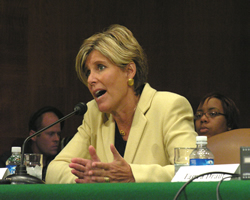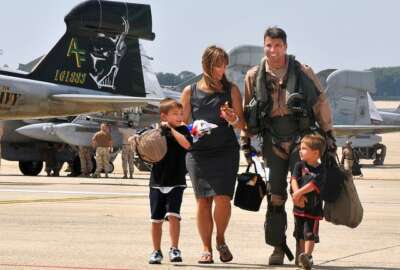
Study finds military households feeling more financially secure
Active duty and reserve service members say they are feeling comfortable financially.
Military service members are feeling more comfortable in their financial situations, but they still aren’t out of the woods when it comes to saving for a rainy day.
A Defense Department study on the financial readiness of the force finds 70 percent of active duty and 61 percent of reserve service members feel “comfortable” in their current financial condition.
Additionally, 83 percent of service members said their financial situation is better than it was compared to a year ago.
The report, delivered to Congress on Jan. 24, also indicated some service members are not saving much money.
The report stated 38 percent of troops have less than $2,000 saved, and 38 percent of reservists are in the same situation. The DoD report uses $2,000 as a baseline for households experiencing a financial shock.
A total of 50 percent of active-duty members have more than $2,000 saved and one in every five service members has $10,000 or more in emergency savings.
That’s actually better than the average U.S. citizen. A 2017 GOBankingRates survey found 57 percent of people living in the U.S. have less than a grand in their savings accounts.
People in the military are staying out of credit debt too. Eighty-five percent of active-duty and reservists said they pay their credit card debt when incurred. Only 7 percent of active-duty and 9 percent of reservists said they failed to make a minimum credit card payment.
Financial literacy seems to be doing well too.
“Service members were generally knowledgeable about a number of financial management activities related to debt and credit, spending habits, making financial plans, saving and investing, indicating many have the knowledge base to make positive financial decisions,” the report stated.
DoD and the military branches offer services to keep service members informed about financial decisions.
DoD also offers financial literacy training, education on its new blended retirement system and financial counseling.
However, previous studies found financial literacy to be an issue in the military.
“This shortfall in financial literacy training has been a long-standing issue,” the Military Compensation and Retirement Modernization Commission report stated in 2015. “Existing financial literacy programs do not adequately educate service members and their families on financial matters. … Weaknesses in financial literacy are adversely affecting service members and their families. A bad credit report, a debt-collection action, or other financial problems can be devastating for a service member’s career and can affect the mission readiness of a unit, which often cannot use a service member who has lost a security clearance due to financial problems.”
Last year, the Army enlisted financial guru Suze Orman to keep soldiers’ checkbooks balanced.
Orman opened up her finance courses for free to soldiers.
Orman said the course covers credit scores, debt, credit plans, retirement plans, wills, trusts, life insurance, school loans and many other monetary lessons.
Read more of the DoD Personnel Notebook.
Copyright © 2025 Federal News Network. All rights reserved. This website is not intended for users located within the European Economic Area.
Scott Maucione is a defense reporter for Federal News Network and reports on human capital, workforce and the Defense Department at-large.
Follow @smaucioneWFED




